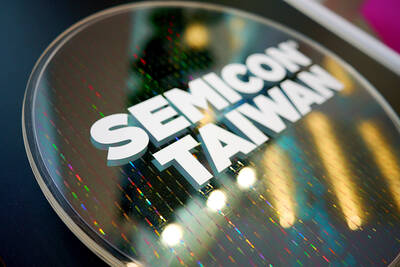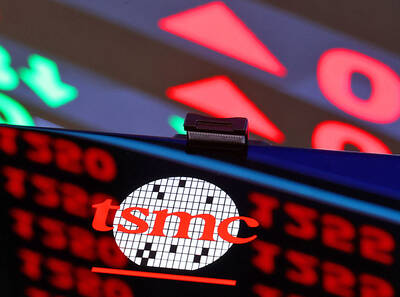The US dollar advanced against the euro and rose to a five-month high versus the yen after an industry report showed prices paid by US manufacturers jumped last month and services industries expanded at a faster pace.
The figures, one of which was accidentally released early, sparked a rally in the US currency after it initially declined following the Labor Department's monthly US payrolls report. Employers added 110,000 workers last month, barely half the number economists expected.
"A lot of players established short dollar positions at bad levels," said Tom Benfer, vice president of foreign exchange in New York at the Bank of Montreal. "As the market turned stronger for the dollar, it turned into a blood bath."
Against the euro, the dollar climbed to US$1.2912 at 5:01pm in New York, from US$1.2964 late on Thursday, according to electronic currency-trading system EBS, and rose 0.3 percent for the week.
The dollar gained to ?107.56, from ?107.15, after earlier touching ?107.79, the highest since Oct. 21. A short position is a bet on a currency's decline.
In late New York trade, the dollar stood at 1.2030 Swiss francs from SF1.1962 on Thursday.
The pound was being traded at US$1.8804 from US$1.8899 late on Thursday.
Faster growth and inflation may bolster expectations the US Federal Reserve will keep increasing interest rates to contain inflation as the US economy outpaces Europe's for a fourth year. The dollar gained 4.6 percent versus the euro last quarter, the biggest gain since the first three months of 2001.
"The very strong rise in the prices-paid number is compounding worries about inflation," said Mitul Kotecha, head of currency strategy in London at Calyon, a unit of Credit Agricole SA. "Interest rates have moved in the dollar's favor in the past few months, and it's got some catching up to do."
Japan's currency began its decline earlier on Friday in Asia after the Bank of Japan's Tankan survey showed confidence among large manufacturers unexpectedly fell in March. The yen had its third straight week of declines versus the dollar, dropping 1.1 percent.
The Institute for Supply Management said its services index rose to 63.1 from 59.8. ISM's manufacturing prices index rose to 73 from 65.5. Several news organizations, including Bloomberg News and Market News, initially published incorrect headlines for the manufacturing report after BusinessWire, a press release company, sent out ISM's separate services press release early by mistake.
"This type of thing really throws the market into a loop," said John Cholakis, a currency trader in New York at Natexis Banques Populaires. "I was caught in the middle of a trade, with stops all over, and first had to reverse my position and then get fully back into it again."
Fed policy makers raised their target rate for overnight loans between banks by a quarter-point to 2.75 percent on March 22, the seventh increase since June, and said inflation pressures are building. The European Central Bank hasn't changed its benchmark rate of 2 percent since 2003, while the Bank of Japan has held its rate near zero for four years.
Fed Bank of Chicago president Michael Moskow said inflation is increasingly a worry. Moskow, who votes on interest rates this year, said "there are some more concerns about inflation now," in an interview with CNBC television.
The dollar is up more than 5 percent from a record low of US$1.3666 per euro on Dec. 30 as the yield advantage, or spread, on US 10-year Treasury notes over German bunds of similar maturity widened to near the biggest since 2000. The gap on Friday was 88 basis points.
Investors are "placing less emphasis on payrolls figures at the moment and putting its attention on inflation and how the Fed might react," said Trevor Dinmore, vice president of foreign-exchange strategy at Deutsche Bank AG in London.
Goldman Sachs Group Inc and Merrill Lynch & Co raised their forecasts for Fed interest-rate increases because of concern inflation is accelerating, before Friday's reports were released.
Goldman, the world's third-biggest securities firm by capital, lifted its year-end forecast for the Fed's main rate to 4 percent, from 3.5 percent. Merrill, the biggest, raised its projection to 3.5 percent, from 3.25 percent.

With this year’s Semicon Taiwan trade show set to kick off on Wednesday, market attention has turned to the mass production of advanced packaging technologies and capacity expansion in Taiwan and the US. With traditional scaling reaching physical limits, heterogeneous integration and packaging technologies have emerged as key solutions. Surging demand for artificial intelligence (AI), high-performance computing (HPC) and high-bandwidth memory (HBM) chips has put technologies such as chip-on-wafer-on-substrate (CoWoS), integrated fan-out (InFO), system on integrated chips (SoIC), 3D IC and fan-out panel-level packaging (FOPLP) at the center of semiconductor innovation, making them a major focus at this year’s trade show, according

DEBUT: The trade show is to feature 17 national pavilions, a new high for the event, including from Canada, Costa Rica, Lithuania, Sweden and Vietnam for the first time The Semicon Taiwan trade show, which opens on Wednesday, is expected to see a new high in the number of exhibitors and visitors from around the world, said its organizer, SEMI, which has described the annual event as the “Olympics of the semiconductor industry.” SEMI, which represents companies in the electronics manufacturing and design supply chain, and touts the annual exhibition as the most influential semiconductor trade show in the world, said more than 1,200 enterprises from 56 countries are to showcase their innovations across more than 4,100 booths, and that the event could attract 100,000 visitors. This year’s event features 17

SEMICONDUCTOR SERVICES: A company executive said that Taiwanese firms must think about how to participate in global supply chains and lift their competitiveness Taiwan Semiconductor Manufacturing Co (TSMC, 台積電) yesterday said it expects to launch its first multifunctional service center in Pingtung County in the middle of 2027, in a bid to foster a resilient high-tech facility construction ecosystem. TSMC broached the idea of creating a center two or three years ago when it started building new manufacturing capacity in the US and Japan, the company said. The center, dubbed an “ecosystem park,” would assist local manufacturing facility construction partners to upgrade their capabilities and secure more deals from other global chipmakers such as Intel Corp, Micron Technology Inc and Infineon Technologies AG, TSMC said. It

EXPORT GROWTH: The AI boom has shortened chip cycles to just one year, putting pressure on chipmakers to accelerate development and expand packaging capacity Developing a localized supply chain for advanced packaging equipment is critical for keeping pace with customers’ increasingly shrinking time-to-market cycles for new artificial intelligence (AI) chips, Taiwan Semiconductor Manufacturing Co (TSMC, 台積電) said yesterday. Spurred on by the AI revolution, customers are accelerating product upgrades to nearly every year, compared with the two to three-year development cadence in the past, TSMC vice president of advanced packaging technology and service Jun He (何軍) said at a 3D IC Global Summit organized by SEMI in Taipei. These shortened cycles put heavy pressure on chipmakers, as the entire process — from chip design to mass